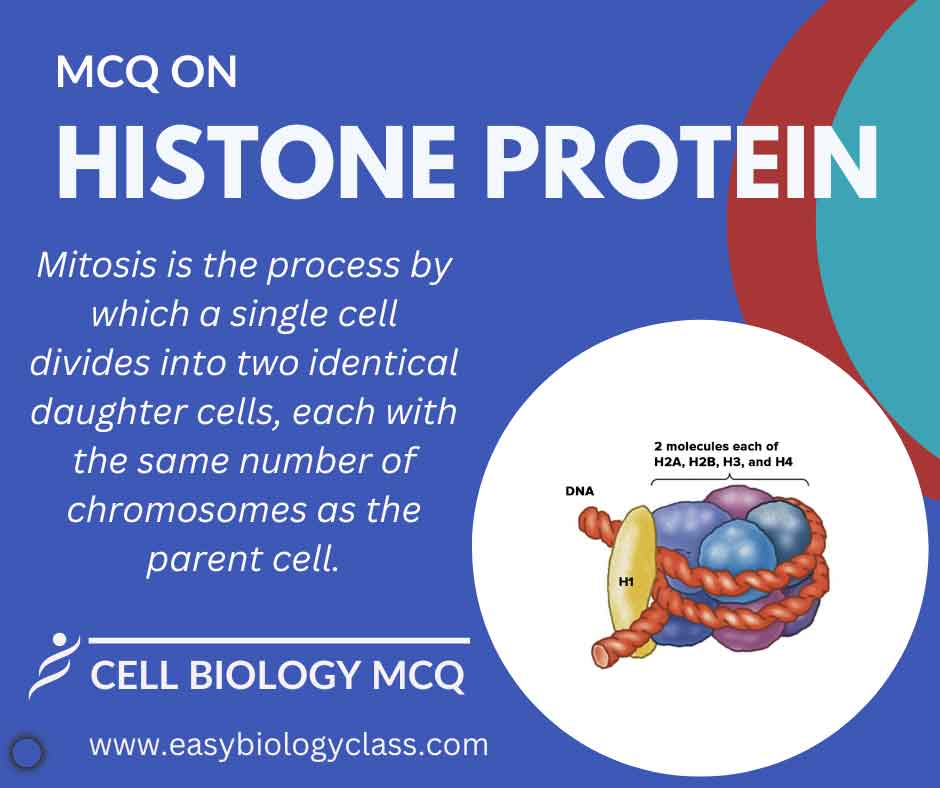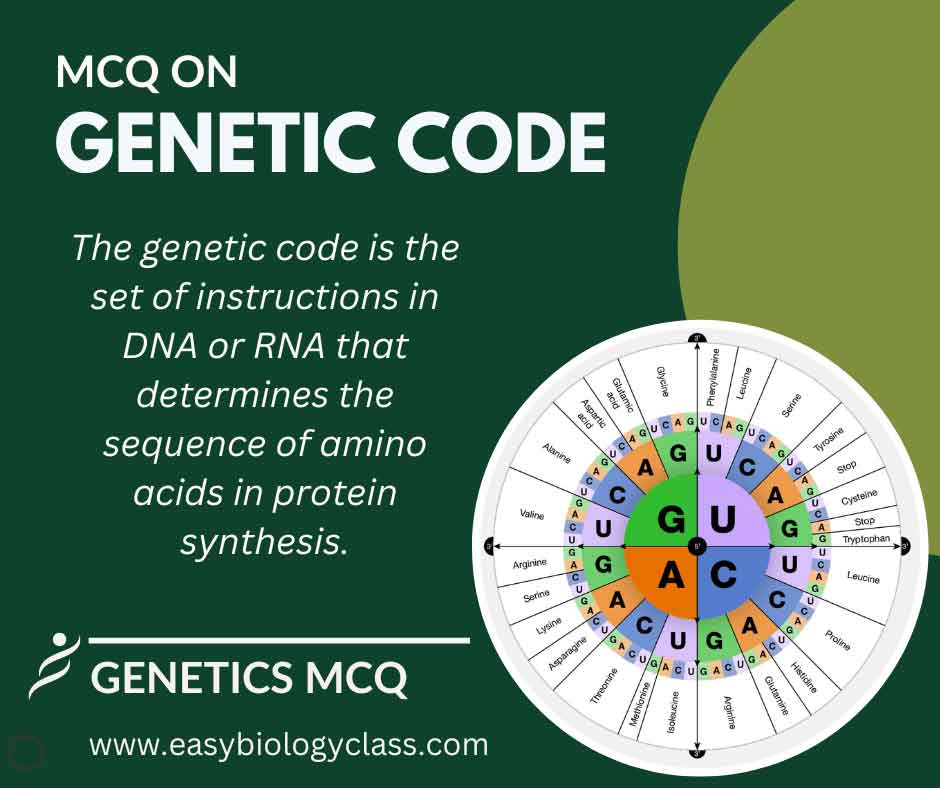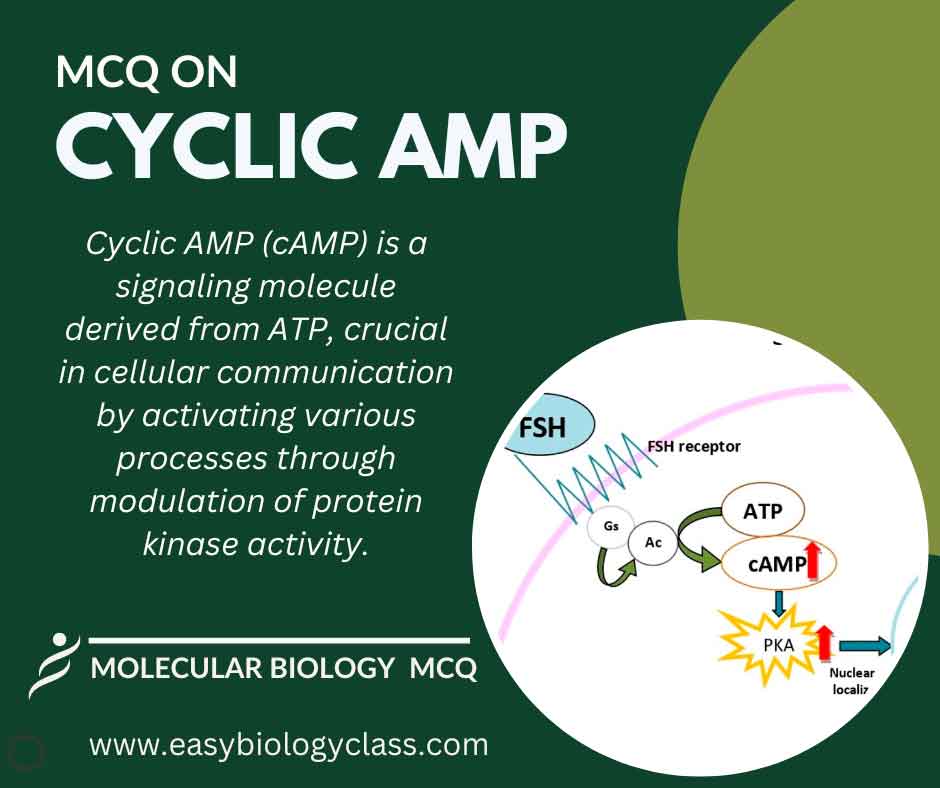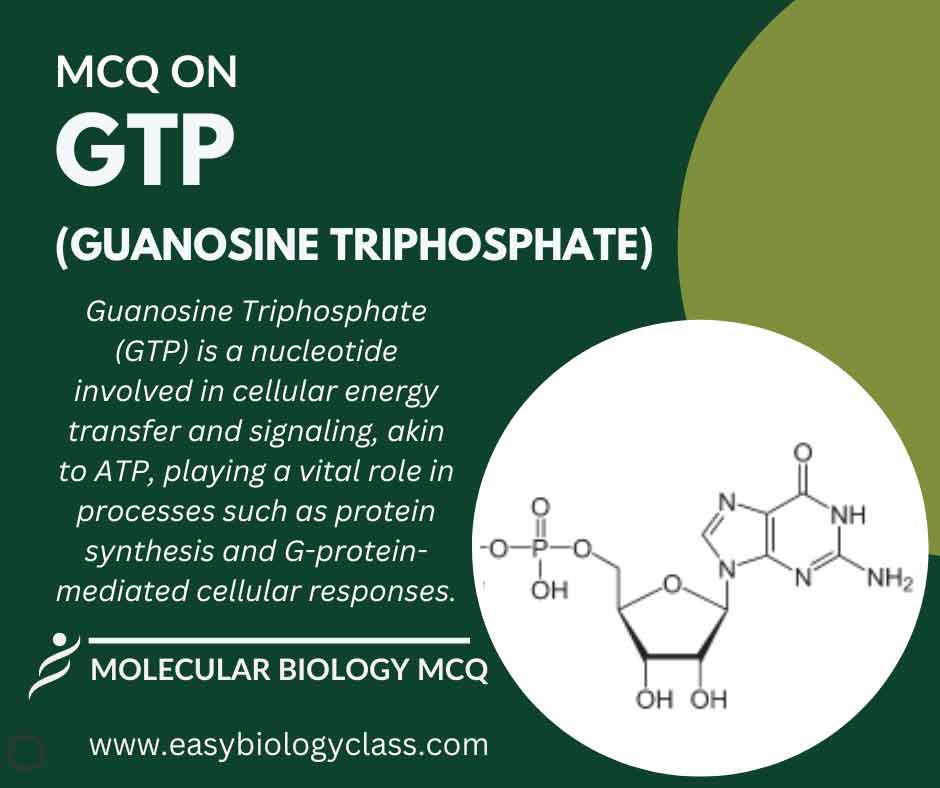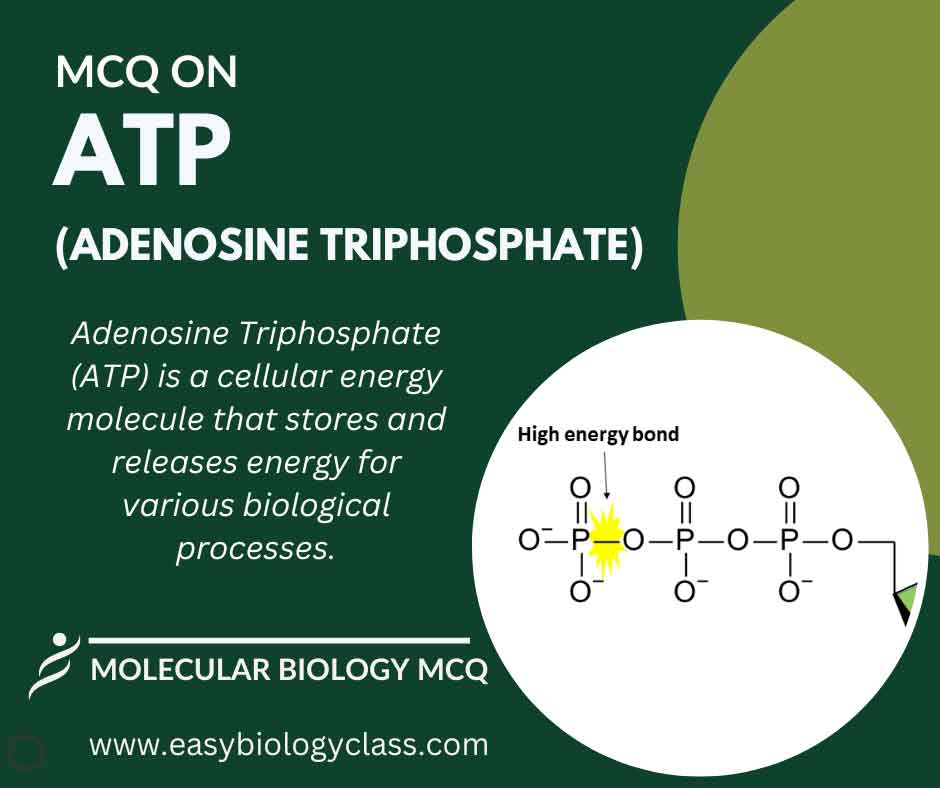Histone proteins are highly alkaline proteins found in eukaryotic cell nuclei. They form the core around which DNA wraps to form nucleosomes, the basic units of chromatin. Histones play crucial roles in DNA packaging, gene regulation, and epigenetic modifications, influencing gene expression and cellular processes within the nucleus. This is […]
Continue ReadingCategory Archives: Molecular Biology MCQ
MCQ on Genetic Code
Genetic code refers to the set of rules that govern the translation of genetic information carried by DNA or RNA into functional proteins. It involves the sequence of nucleotide triplets (codons), each specifying a particular amino acid or signaling the termination of protein synthesis. This is an MCQ on Genetic […]
Continue ReadingMCQ on Cyclic AMP Structure and Functions
Cyclic AMP (cAMP) is a signaling molecule involved in intracellular communication. It is derived from adenosine triphosphate (ATP) and functions as a second messenger, activating various cellular processes by binding to and modulating protein kinase activity, playing a crucial role in signal transduction pathways. This is an MCQ on Cyclic […]
Continue ReadingMCQ on GTP Structure and Functions
Guanosine Triphosphate (GTP) is a nucleotide involved in cellular energy transfer and signal transduction. Similar to ATP, it serves as a high-energy molecule, contributing to various biochemical processes, including protein synthesis and G-protein signaling, crucial for cell function and regulation. This is an MCQ on GTP Structure and Functions. Molecular […]
Continue ReadingMCQ on ATP Structure and Functions
Adenosine Triphosphate (ATP) is a nucleotide that serves as the primary energy currency in cells. It stores and releases energy through the transfer of its phosphate groups, crucial for various cellular activities, including metabolism, muscle contraction, and active transport processes. This is an MCQ on ATP Structure and Functions. Molecular […]
Continue Reading
